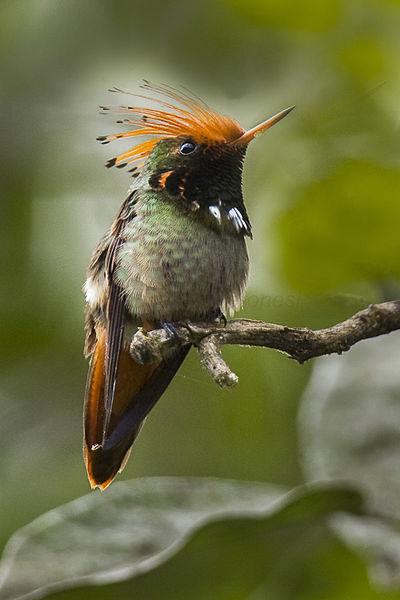
On a birding trip to Panama:
Near the Canopy Tower there are more than two dozen species of hummingbirds but that’s not what most of them are called. Their fanciful names include mangos, plumeleteers, hermits, woodnymphs, emeralds, fairies and coquettes. Here are just a few of the brilliant gems with odd names.
The rufous-crested coquette (Lophornis delattrei), above, seems to be named for a woman who flirts but that is not the case. His flamboyant reddish crest reminded someone of a rooster so he’s a “tiny rooster.” The cock or “coq” became “coquette.”
This female black-throated mango (Anthracothorax nigricollis) is more striking than her iridescent mate. Her odd name began with a mistake when naming the Jamaican member of her genus. Mango fruit is native to India so the original name, mango-hummingbird, did not refer to food. Instead it was a documentation error that began at Don Saltero’s Coffee House in 1736.
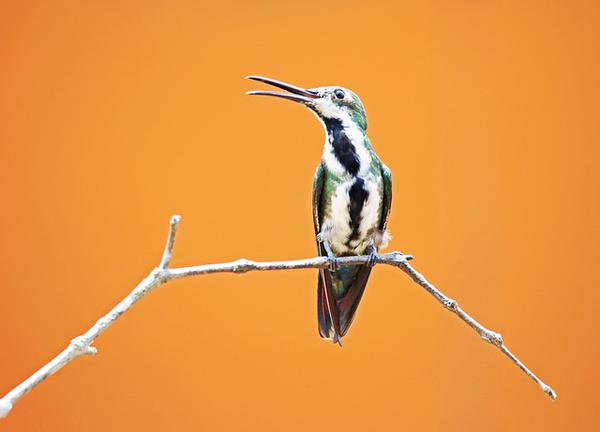
When it comes to “plumeleteer” I can only guess how the name began. A plumelet is a small feather, so if an auctioneer is a person concerned with auctions, then a plumeleteer is a bird concerned with small feathers. There are only two species in the plumeleteer genus Chalybura. Both occur in Panama. Here’s the white-vented plumeleteer (Chalybura buffonii).
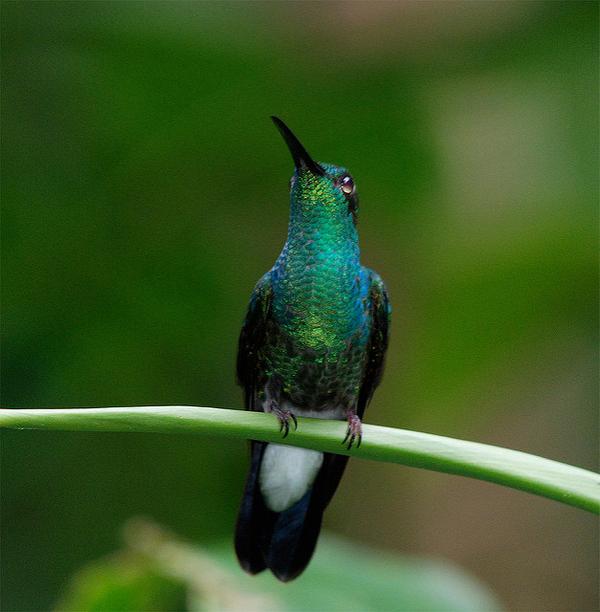
According to Dr. Alexander Skutch, hermit hummingbirds are named for their brownish color, not their social habits. They are brown because they live in deep shade in the tropical forest. Here’s a long-billed hermit (Phaethornis longirostris).
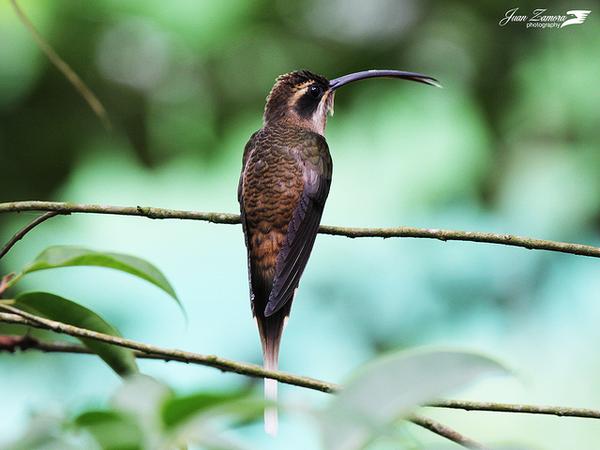
And finally, it doesn’t take much imagination to guess why a hummingbird would be called a wood nymph. Here’s the crowned woodnymph (Thalurania colombica), photographed at Canopy Tower’s sister location, the Canopy Lodge.
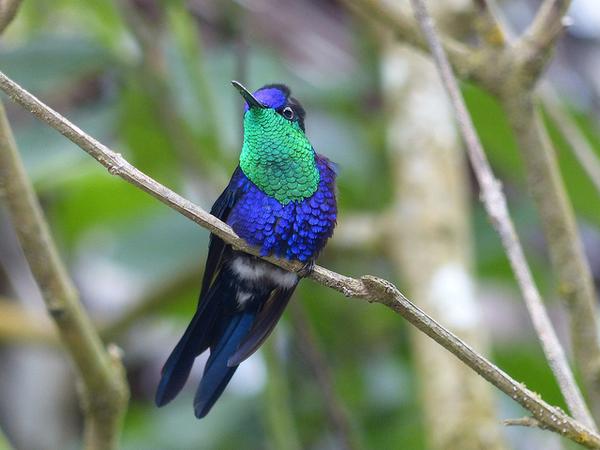
(photo credits:
These spectacular photos were taken by Franceso Veronesi on Wikimedia Commons and vil.sandi, Billtacular, Juan Zamora, and Wendy R.Fredericks on Flickr. Click on the images to see more of their work.)
Day 2: Canopy Tower and Gamboa Rainforest Resort area along the Chagres River.